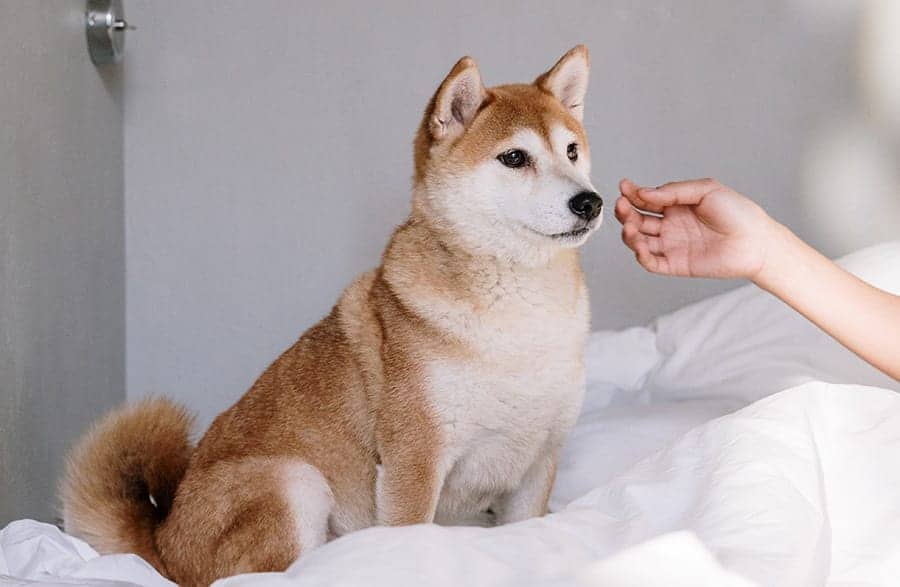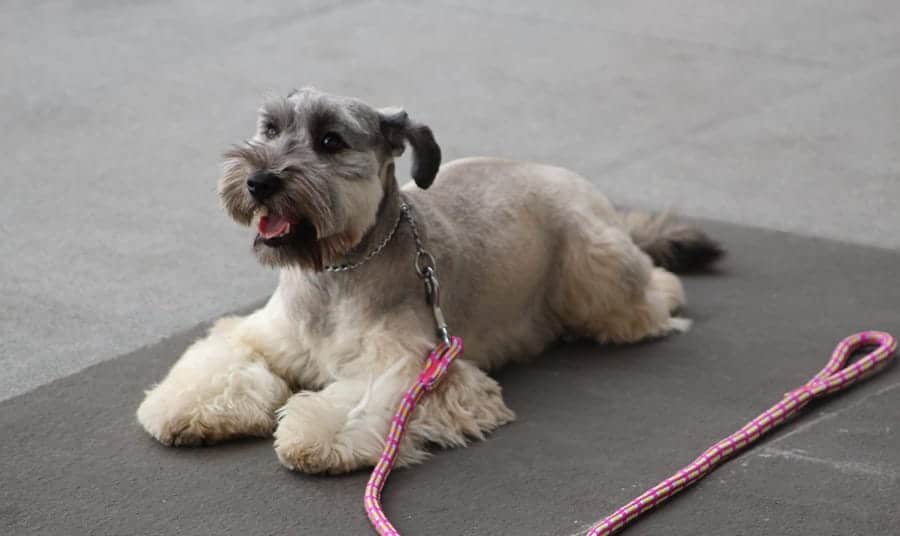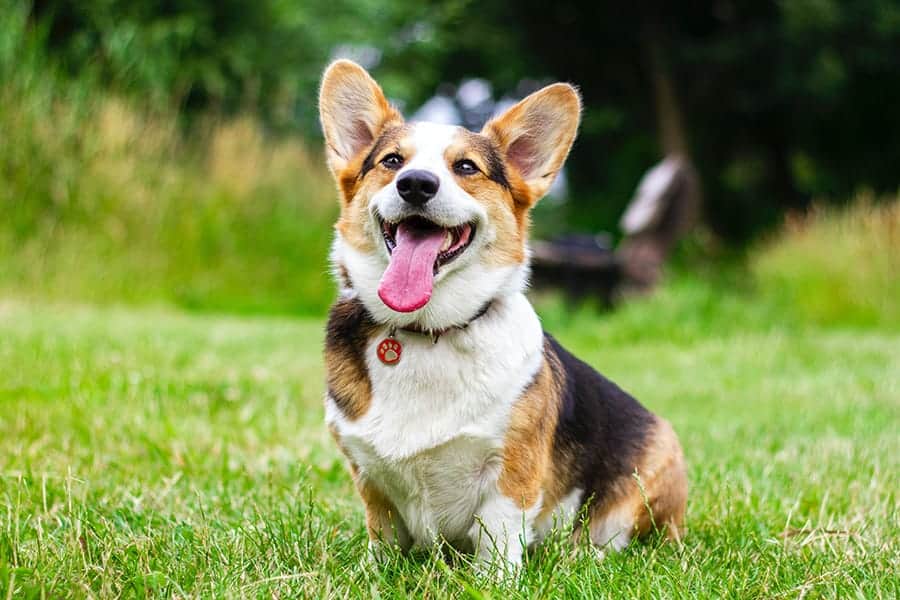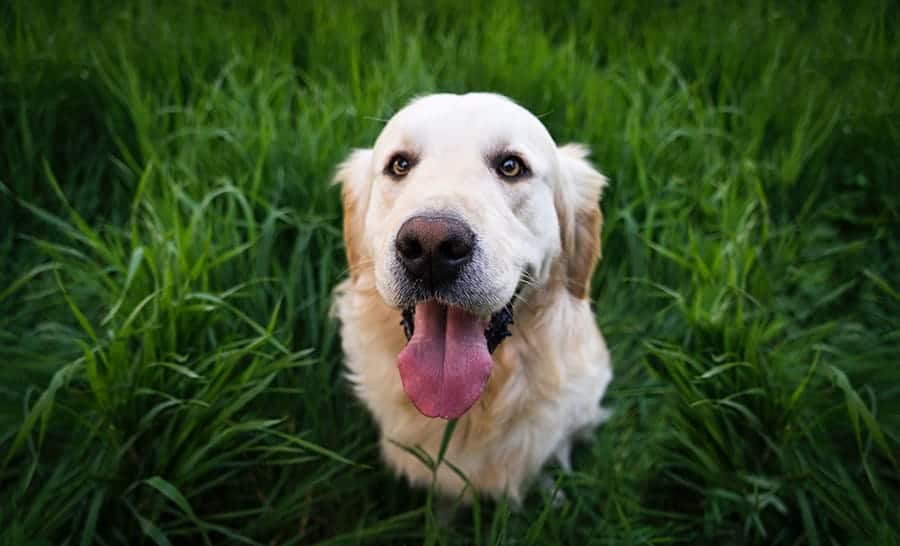How to Teach a Dog to Stay – 3 Simple Steps
Published: Last updated: by Jessi Larson Affiliate Disclosure: We hope you love the products we've recommended! As an Amazon Associate we earn a small share from qualifying purchases.Learning how to teach a dog to stay is an essential – and potentially lifesaving – part of dog training. Fortunately, with patience and persistence, you can train your dog to stay on command in three simple steps.

Guide to How to Teach a Dog to Stay
If you’re wondering how to teach a dog to stay, let’s break down the process into simple, manageable steps.
1. Define a Beginning and an End
First things first, you should set the parameters of your command by defining a beginning as well as an end of the process.
The verbal “stay” command should naturally mark the beginning, but it’s up to you to choose a word that will signify the end, such as “all done,” “OK” or “yes.”
When you’re ready, place your dog in the position you wish them to keep and give the “stay” command. Then, almost immediately follow it with your release command.
Don’t worry if your dog doesn’t initially respond to the release word; just make it clear that it’s now fine to move around. Practice this step until you feel your dog has a firm grasp of the two commands.

2. Work on the Three D’s
After setting the right parameters for your dog, you’ll want to start working on increasing the difficulty of the “stay” command.
This involves the three D’s: duration, distance and distraction. Each of these elements adds difficulty to the command, so it’s important to start slow and build up gradually.
Depending on your ultimate goals, you may not ever require your dog to complete the “stay” command at full difficulty, but practicing these is essential to learning the skill.

3. Know Your End Goal
While you’re utilizing duration, distance and distraction to train your dog to “stay” you should also have a clear idea of your final training goals.
Here are some questions to ask yourself to figure out exactly what your end goals are and determine your approach.
What position does my dog need to hold? (Sitting, laying, etc.)
If you’re planning to have your dog stay over a long period of time, be sure to pick a position that will be comfortable for your dog throughout that duration.
How long will my dog need to stay in position?
This can range anywhere from a few seconds up to a half hour. Choose this duration depending on your goals and be patient while building up to it.
How far do I plan to be while my dog stays in position?
Your distance from your dog they are asked to stay is going to play a large role in the training. Do you want your dog to stay while you’re a few feet away or will you be leaving their sight completely?
What kind of distractions will my dog need to face?
Depending on the physical location, your dog will be faced with plenty of distractions and temptation while trying to stay put. It’s up to you to figure out just how much distraction they will have to withstand.

Now that you’ve answered these questions, it’s time to focus on the challenges ahead:
1. Practice Duration
This refers to the duration of your dog’s ability to stay in place. It will initially start out very small but should be gradually increased with training until you’ve achieved the length of time that you’re comfortable and happy with.
To increase the duration, start by giving your stay command, then count to three and use your release word.
Next, simply add two or three seconds each time you ask your dog to stay. If the stay if broken before the time limit, don’t worry, just repeat the process and decrease the length of stay slightly.
Be consistent and you’ll achieve your goal duration before too long.

2. Practice Distance
Once you’ve worked on the duration of your dog’s stay, it’s time to introduce the element of distance. This is just a measure of how far you move away from your dog while you’re asking them to hold your command.
Though it is tempting for some owners to rush through this, distance needs to be taught one step at-a-time.
Place your dog in the stay position and give your command, then take one step back from your dog, return and give your release command.
Continue by adding single steps until you have reached a distance you are comfortable with. For some, this may be just a few feet, while for others it means getting out of your dog’s eyesight.
Again, it’s important not to hold food while training this command to prevent your dog from being tempted to follow you.

3. Practice Distractions
When you’re satisfied with the duration and distance portions of this exercise, it’s time to move on to distractions.
Depending on your dog’s personality and your final goals, distractions can add a serious challenge to your dog’s ability to carry out the “stay” command.
For example, if your pup needs to be able to stay before crossing a busy street or while waiting for you outside of a restaurant, distractions like traffic, pedestrians, loud noises or other animals can seriously challenge your dog’s composure and even put them at risk.
When introducing distractions, make sure your dog is comfortable with the duration and distance portion of the command. Then, start by adding a single distraction at-a-time.
These should progress from slight to more intense as you build up your dog’s skill.

Conclusion: How to Teach a Dog to Stay
There are so many moments when you’ll need a dog to stay in place. When you don’t want them to get into something, when a visitor comes to the door, when they’re running toward a dangerous area, the list goes on and on
Dogs are excited, impulsive creatures, however, which often makes training your dog to stay in place a challenging task.
Depending on your goals and individual needs, you’ll want to set the parameters of the command early on and proceed slowly when adding the 3 D’s to the equation.
Remember when trying to figure out how to teach a dog to stay, it’s far from a linear process and should be approached as such. Give your dog plenty of encouragement and patience when teaching this new skill and remember to build up to your final goal gradually.
Watch a Training Video
As you learn how to teach a dog to stay, sometimes it helps to see the process visually. (I know I’m definitely a more visual learner!)
We are big fans of dog trainer Zak George, and he’s put together a video that shows you how to put the three D’s into practice.
It’s a must watch as you work on how to teach a dog to stay!



 Getting a New Dog?
Getting a New Dog?